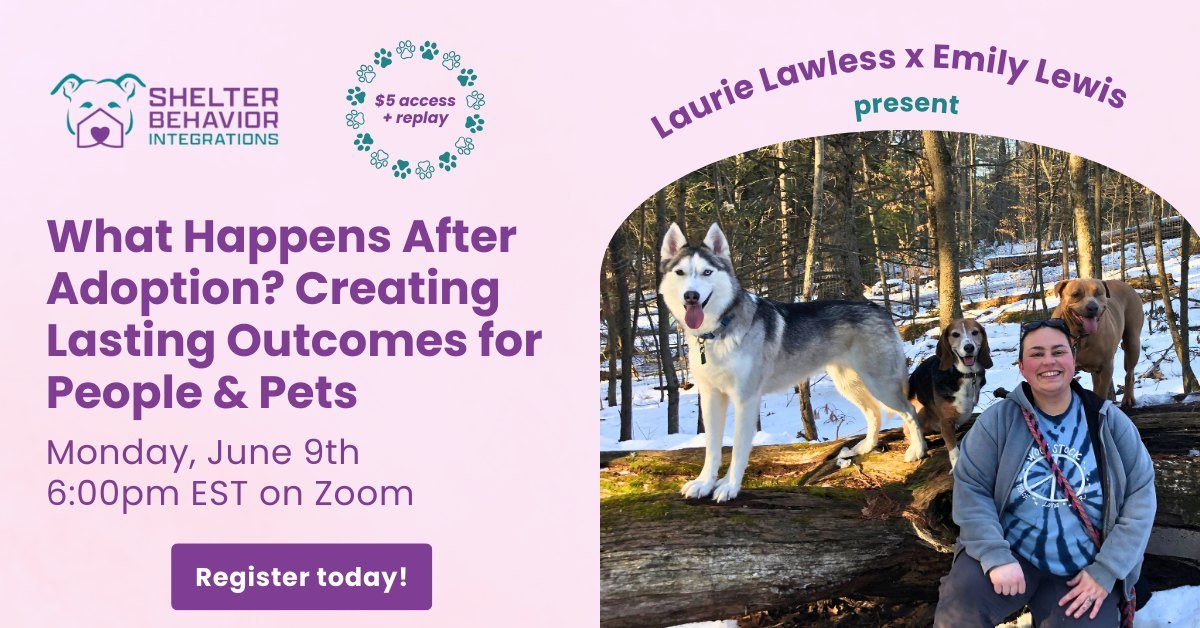Sign up to view this video
Join NowThen & Now: What Decades in Shelters Have Taught Us
Webinar Recap — Rethinking Shelter Behavior Assessments with Laurie Lawless & Sue
In this candid, experience-rich conversation, Laurie Lawless and Sue explored the evolution of shelter dog behavior work — from the early, often arbitrary practices of the 1980s to today’s need for welfare-driven, evidence-informed decision making.
How We Got Here
Sue shared her journey from teenage dog shows and pet-sitting to leading programs at the ASPCA and running her own shelter. She reflected on a time when adoption decisions were based on breed, color, or length of stay — and how that shaped her drive to create Assess-A-Pet, one of the first structured tools designed for the shelter environment. Post-adoption follow-ups revealed surprising truths: dogs rarely displayed the separation anxiety shelters feared, and those who never attended training classes often thrived.
The Changing Dog Population
Laurie and Sue discussed a dramatic shift: shelters now see fewer behaviorally easy dogs and more borderline or dangerous cases, partly due to spay/neuter campaigns and rescue trends. This shift challenges teams to evaluate dogs with nuance — not just “pass/fail” tests.
Assessment That Works
The pair highlighted the balance between structured assessments and real-time observational data. Rigid testing alone misses key behavior clues, while unstructured notes can lack consistency. A thoughtful, Pathway-driven approach means:
Combining hands-on assessments with daily staff observations
Prioritizing clear, actionable communication about behavior findings
Avoiding over-reliance on foster notes or playgroups alone as predictors
Playgroups: Powerful but Limited
While playgroups improve welfare and reveal social tendencies, they don’t predict safety in every setting. Laurie shared examples of dogs thriving in groups but later showing aggression in homes. Both speakers stressed intentional playgroup design and education for adopters and staff on what group play can — and can’t — tell us.
Real-World Leadership & Tough Calls
Laurie spoke honestly about the emotional weight of behavior decisions, including when euthanasia is the most humane option. Sue reinforced the need for frontline staff and volunteers to understand the full picture — from intake to adoption counseling — to make consistent, welfare-minded choices.
Designing Better Shelters & Managing Puppies
The session closed with big-picture thinking:
Shelter design that supports both public engagement and individualized care
Criteria-based decisions on adoptability vs. euthanasia
The unique challenge of aggressive puppies and the influence of social media on outcomes






